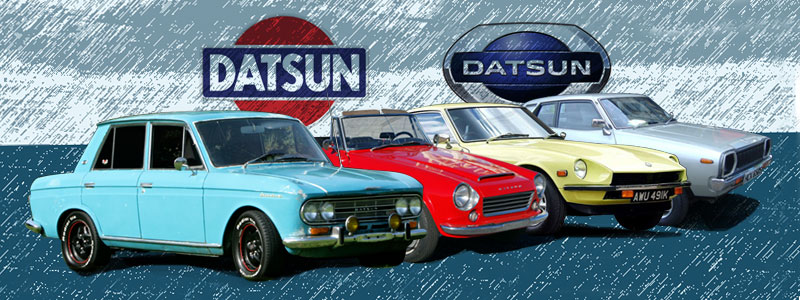 |
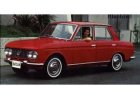 |
|
1964 - 1967
The 1964 Datsun 410 marked a quantum shift in car design for Nissan, in both design and construction. Production began in September 1963 of what was to be a radically different Datsun. Nissan had been involved in a technological colaboration with the Austin Motor Company of England during the 1950s, and as a result all the cars in this series, from the 110 to the 312, all had a definate Austin appearance. All that was about to change with the introduction of the 410. More>> |
 |
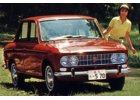 |
|
1964 - 1967
The 'Pininfarina' designed P410 Bluebird replaced the English inspired design of the 310/311/312 series, and ushered in Datsun's use of unitary construction of the body, rather than a separate chassis. More>> |
 |
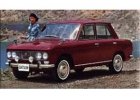 |
|
1964 - 1967
The ' Pininfarina' designed P410 Bluebird replaced the English inspired design of the 310/311/312 series, and usered in Datsun's use of unitary construction of the body, rather than a separate chassis. More>> |
 |
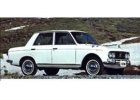 |
|
1964 - 1967
The 410/411 series Bluebird had a massive effect on Nissan's global sales. In 1963 Nissan sold 260000 vehicles, by the time the 411 ceased production in June 1967 Nissan were selling 726000 vehicles a year. Most of those were Bluebirds. Production continued until August 1964, when the facelifted 1965 model went into production. More>> |
 |
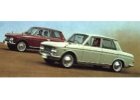 |
|
1964 - 1967
The ' Pininfarina' designed P410 Bluebird replaced the English inspired design of the 310/311/312 series, and ushered in Datsun's use of unitary construction of the body, rather than a separate chassis. More>> |
 |
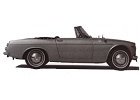 |
|
1965 - 1970
The lack of handling compared to its rivals resulted in Datsun not having the sales success they had hoped for - and needing to design an entirely new type of car. Enter the 240Z and the title of 'World's best selling sports car'. More>> |
 |
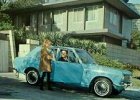 |
|
1967 - 1970
Released in 1967, the Datsun 1000 would quickly become one of the world's most popular small cars, and in just 2 short years Datsun had managed to manufacture and sell over half-a-million of them. More>> |
 |
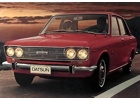 |
|
1967 - 1972
When the Datsun 1600 hit Australian dealerships, the car was nothing short of a revelation. Sure, there was competition, but to come anywhere near the potential you needed to fork out around A$3000. You could shop around, and get near the quality for $2500 but you would have been peeing the proverbial against the wall. More>> |
 |
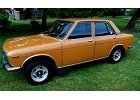 |
|
1967 - 1972
From 1967 to 1972 there was a car that won the respect of nearly everyone that drove it. Perhaps with less showroom appeal than the competition, the Datsun 1600 quickly etched itself into the psyche of many young Australians as arguably the first true "Performance 4". More>> |
 |
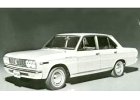 |
|
1969 - 1974
Early in 1969 Datsun was to release their "family six" alternative to the big Aussie sedans of the day, the handsome "Big Datsun Six". But Australia was one of some fifty-seven countries where the all new car was unveiled, it truly being a world car. More>> |
 |
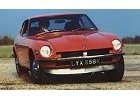 |
|
1969 - 1975
Building street cred with such vehicles as the Honda S800 and Toyota 2000GT, Japan was starting to emerge as a legitimate sports car maker. The challenge for the Japanese was to break into the lucrative US market. More>> |
 |
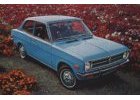 |
|
1970 - 1973
The Datsun 1200 was the second generation Sunny in Japan. This new Sunny sported MacPherson strut front suspension and the A series engine had grown to 1171cc. More>> |
 |
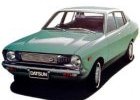 |
|
1973 - 1977
Never a glamorous car in its hey day, the perennial 120Y can still be seen on the highways of today and, due to its poor road manners is not particularly collectable. But, as with all cars that have been out of production for over 20 years, they are becoming more scarce and an extremely good condition vehicle could just make a good buying decision. More>> |
 |
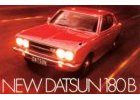 |
|
1973- 1977
Both the 180B and 200B models were extremely popular with Australian motorists, although it is rare to see one on the roads today. The time is fast approaching when 70's nostalgia buffs will lust for a good clean example, only to find there are none. More>> |
 |
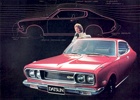 |
|
1973- 1977
The 180 B SSS hardtop was a punchy, willing performer, but the main emphasis was on luxury and exclusivity. Unlike the 180B sedan, it was fully imported from Japan and the 45 per cent tariff burden precluded any chance of a saturation sales campaign. Notwithstanding, for 1973 its basic, manual-transmission price of A$3395 assured a competitive footing in the small prestige coupe market. More>> |
 |
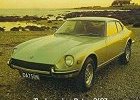 |
|
1974 - 1978
Despite the increase in engine capacity, the new "Z" was actually slightly slower, and less sporting, than its predecessor. While it remained on sale to global markets for four years, in the US (which was its principle market) it was replaced by the lustier 280Z in less than a year. More>> |
 |
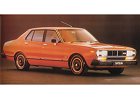 |
|
1977 - 1981
The Datsun 180B was replaced in October of 1977 with the 200B. Continuing with the Japanese styling the sedan was released with the fully imported as a sedan, a coupe that retained the SSS badge and a wagon. More>> |
 |
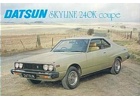 |
|
1977 - 1981
Launched outside of Japan in 1979, the Datsun Skyline was really a technically sophisticated coupe update of the old 240Z GT fastback, which was subsequently replaced by the 260Z and then the 280ZX. More>> |
 |
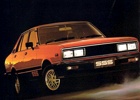 |
|
1978 - 1982
In Australia we knew it as the Stanza, but in other markets it was variously known as the "Violet", "Auster", "510", and "160J". Available locally in either GL or better equipped GX form, the Stanza was a revival of the shape and specification of the original highly successful Datsun 1600, which to our mind was the first really good Japanese car to be marketed overseas. More>> |
 |
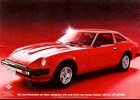 |
|
1978 - 1983
It is always hard to follow up a brilliant first model car with subsequent iterations. Manufacturers really have no choice - they have to keep their product fresh in an attempt to lure buyers into their showrooms. More>> |
 |
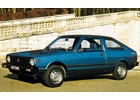 |
|
1979 - 1982
The Datsun Cherry first appearing in 1970, then weighing 1477 Ib (670 kg). It was 11.84 ft (3.61 metres) long, and was one of the first Japanese front-drive cars. Over the years the Cherry ripened in size and weight, so much so that the third generation model, released in 1979, weighed 1885-1940 Ib (855-880 kg) in running order, and was 12.76 ft (3.89 metres) long. More>> |
 |
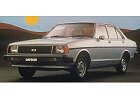 |
|
1979 - 1986
The fully imported Sunny was introduced in early 1979 as a successor to the outgoing 120Y model, and to supplement the locally built Stanza which had failed to produce the expected sales figures for Nissan. But following in the 120Y’s footsteps would certainly be a hard act to follow, particularly when the 120Y’s two major attributes were that it was both low priced an inexpensive to run. More>> |
 |
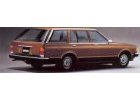 |
 |
1981 - 1986
In May 1981 the 200B was replaced with the Bluebird. The styling of the Bluebird moved towards a more European look with lower waistlines and simple lines. Retaining much of the running gear from the 200B, with a front engine, rear drive layout. More>> |




